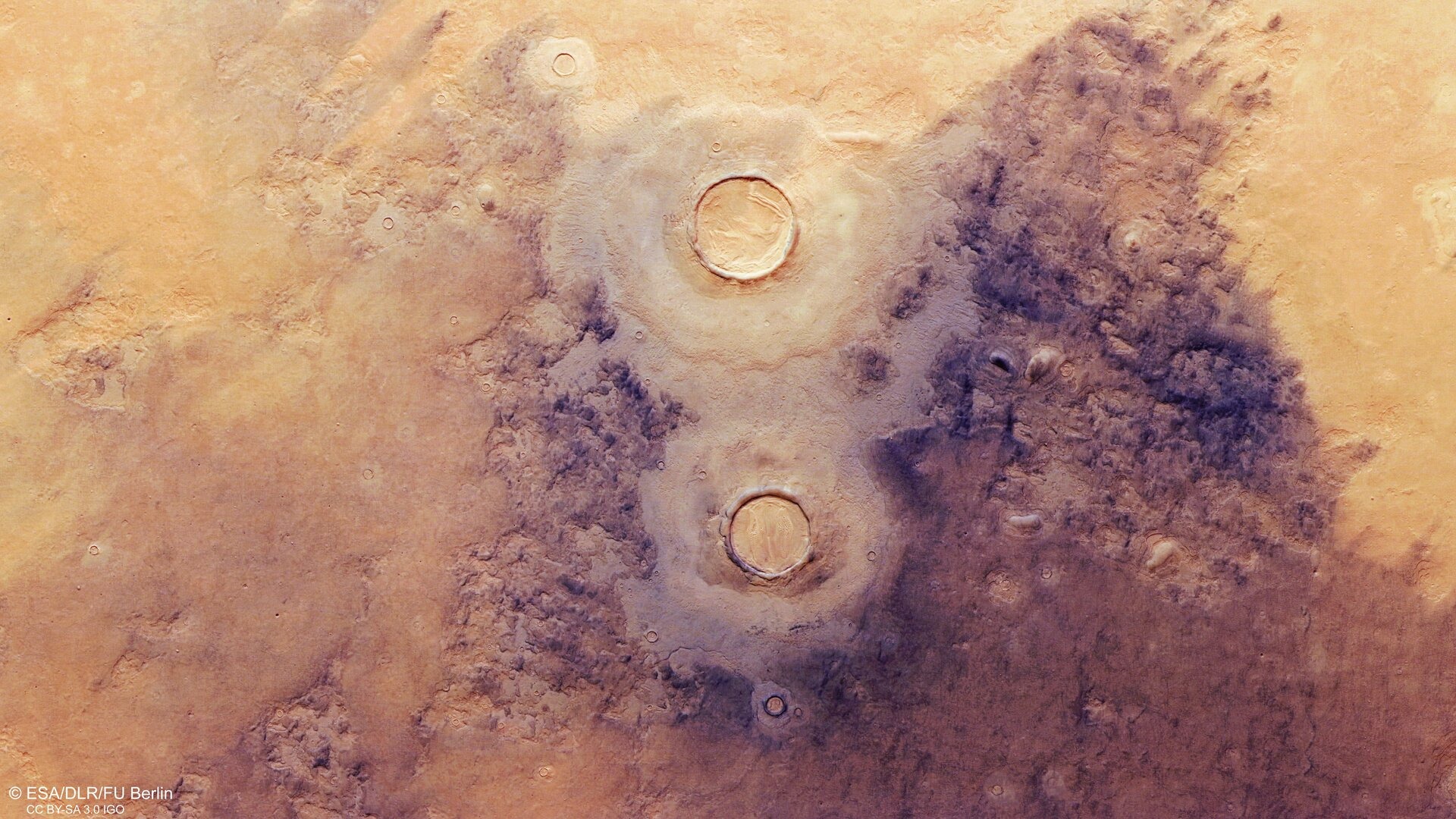Mars crater complex shows layers of ice in stunning spacecraft photos
It's the largest known impact basin in the solar system.

Ice and dust pile on the Martian surface like a layer cake in fresh images based on data from the Mars Express spacecraft.
The European Space Agency (ESA) mission shows so-called "mantle deposits" of ice and dust at in Utopia Planitia, a region that is roughly twice the size of Earth's Sahara Desert. Utopia is one of three major basins in Mars' northern hemisphere and has a lot of ice within it. (The plain also happens to be the landing site of the Chinese Zhurong rover.)
Studying the icy deposits of Utopia Planitia may give more clues about the basin's complex history, ESA officials said in a statement, as scientists suspect it was formed through depositions of sediments, lavas and volatile substances (like water or hydrogen).
Related: 12 amazing photos from the Perseverance rover's 1st year on Mars
These depositions blew across the Martian surface by wind, rain or similar processes, ESA officials noted; in fact, the depositions spotted at Utopia Planitia likely came in more than 10 million years ago, when Mars had a more tilted rotational axis that allowed snow to fall regularly. Today, all we see of that snow is the ice and dust that the precipitation brought with it.
The second-largest crater in the image, visible at left in the image at the top of the story and at left in the image below, features so-called "brain terrain." This terrain is often associated with icy material, and is named because the ridges look somewhat like the outer surface of a human brain.
Brain terrain tends to be located at the boundary of the lower, northern plains of Mars and the southern highlands, ESA said.
Get the Space.com Newsletter
Breaking space news, the latest updates on rocket launches, skywatching events and more!
The image also shows a dark-colored region where the ground is contracting under the icy load, as well as numerous circular depressions that formed as ground ice melted or turned to gas, causing the surface to collapse.

Mars Express has found abundant evidence of water since the spacecraft began science operations in 2004, the ESA webpage about the mission states.
"Key discoveries include the presence of minerals that form only in the presence of water, the detection of water-ice deposits underground, and evidence to suggest volcanism on Mars may have persisted until recent times," ESA said on the mission webpage.
Follow Elizabeth Howell on Twitter @howellspace. Follow us on Twitter @Spacedotcom and on Facebook.
Join our Space Forums to keep talking space on the latest missions, night sky and more! And if you have a news tip, correction or comment, let us know at: community@space.com.

Elizabeth Howell (she/her), Ph.D., was a staff writer in the spaceflight channel between 2022 and 2024 specializing in Canadian space news. She was contributing writer for Space.com for 10 years from 2012 to 2024. Elizabeth's reporting includes multiple exclusives with the White House, leading world coverage about a lost-and-found space tomato on the International Space Station, witnessing five human spaceflight launches on two continents, flying parabolic, working inside a spacesuit, and participating in a simulated Mars mission. Her latest book, "Why Am I Taller?" (ECW Press, 2022) is co-written with astronaut Dave Williams.









